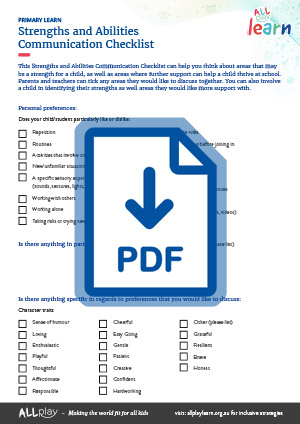
Sensory
On this page:

About sensory functioning
Sensory functioning describes how the body responds to sounds, textures, lights, smells, pain, temperature and other stimuli or information in the environment. Some teenagers can have reduced sensory awareness, such as teens who are Deaf, deaf or hard of hearing, or teens who are blind or low vision. Other teenagers may find some sensory input distracting or distressing such as those with autism.
Students who have increased or reduced sensitivity to sensory input may experience disruptions to their participation and engagement at school if modifications to the learning environment have not been made. All childrenstudents will differ in the type and severity of sensory concerns they have.
Use the tabs below to explore when and why evidence-based sensory modifications may be particularly helpful for some students.

Evidence-based strategies

Best practice tips
Be aware of students’ sensory needs
Provide choices
Consider uniform
Provide a quiet area
Allow time to calm down
Allow the use of noise-reducing headphones

Other considerations

Relevant resources
Visit our resources page for a range of resources that can help to create inclusive education environments for students with disabilities and developmental challenges. A particularly relevant resource for supporting students with sensory issues is:

